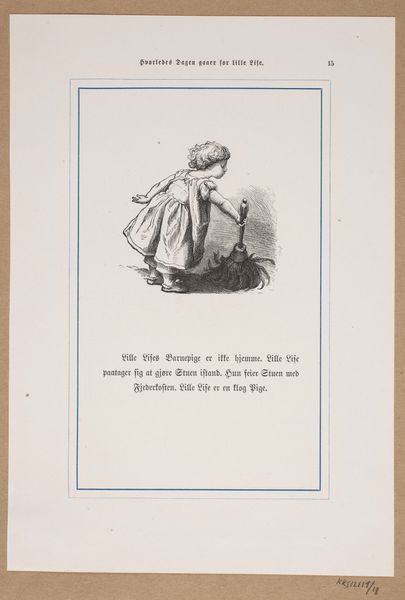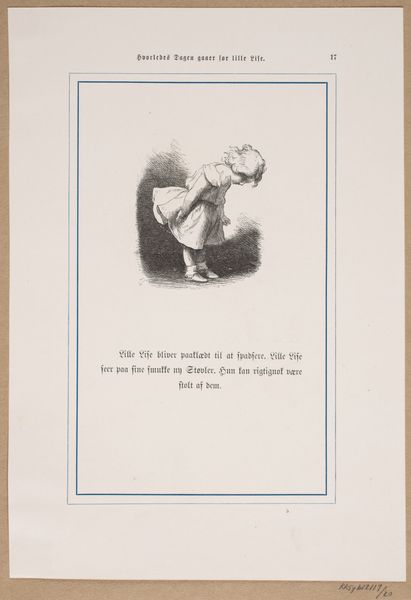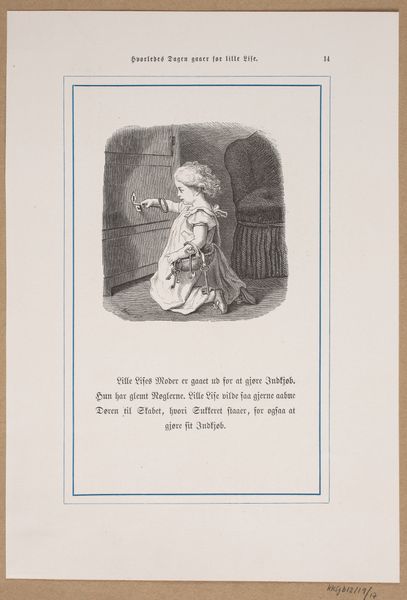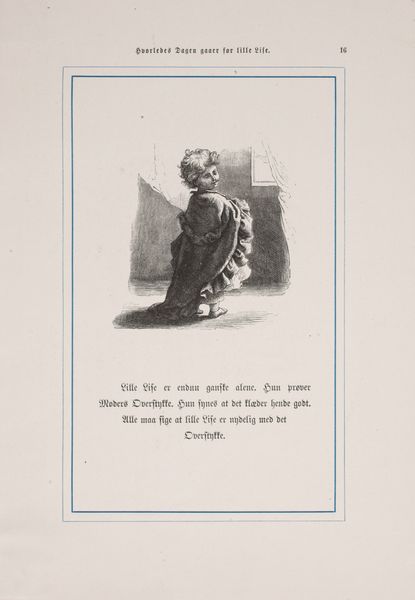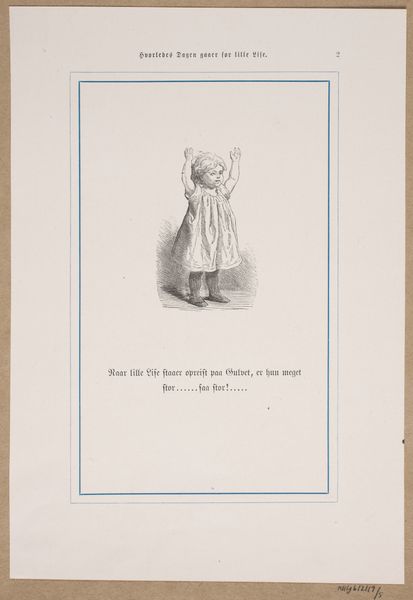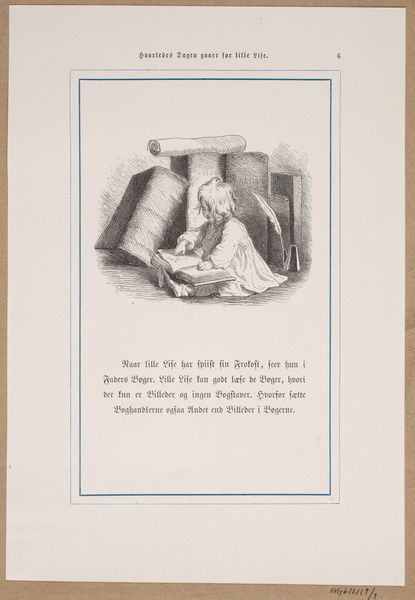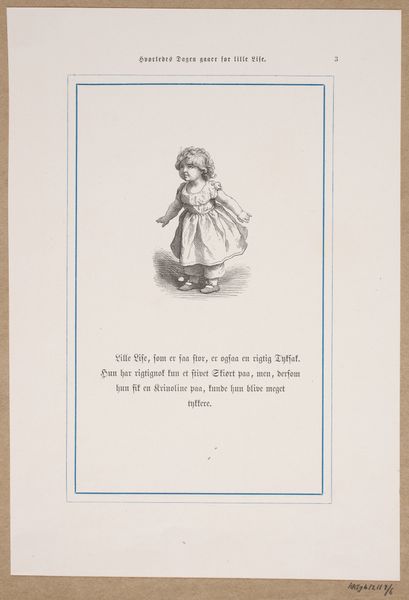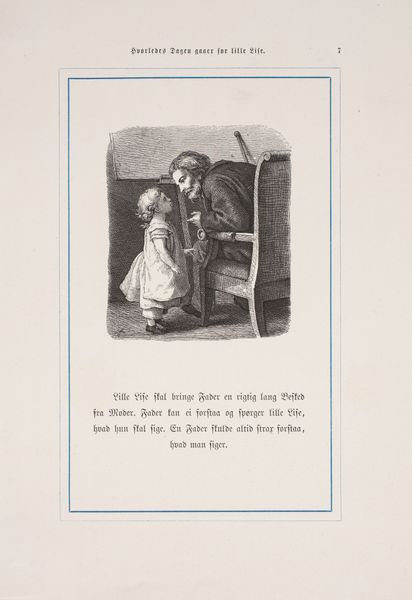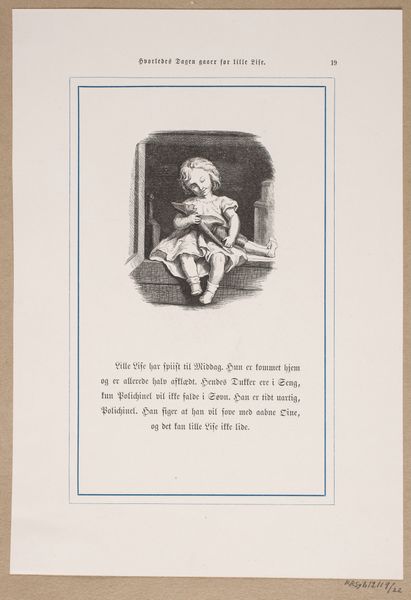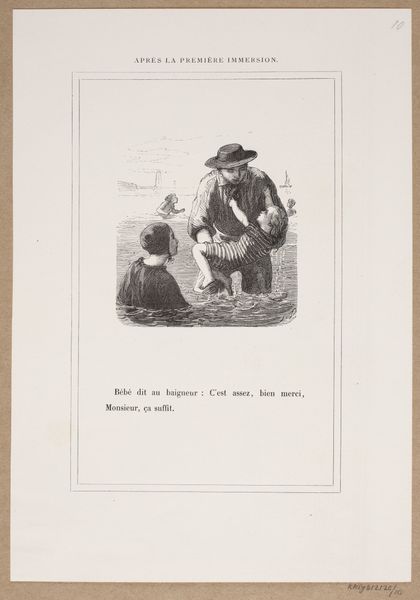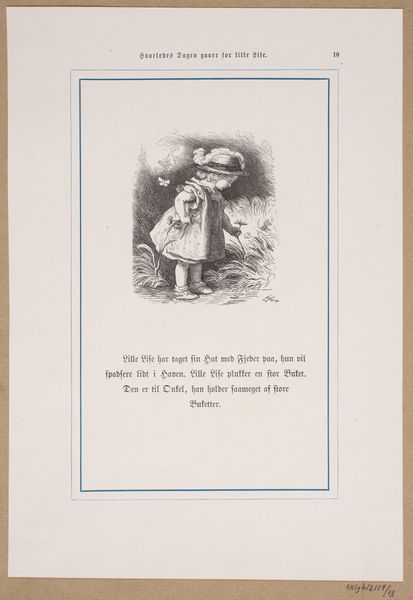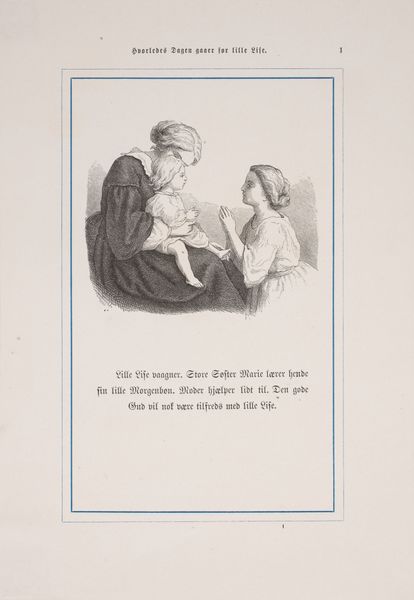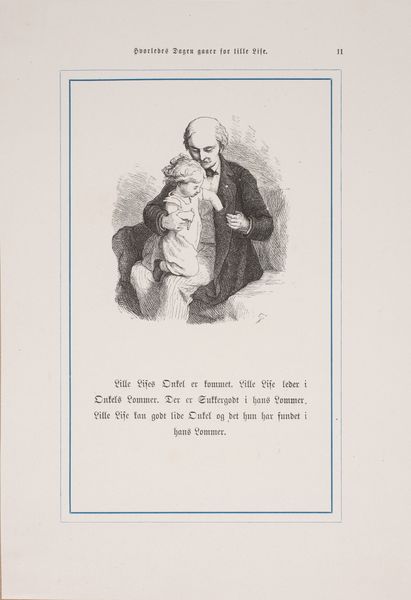
Illustration til "Hvorledes Dagen gaaer for Lille Lise" 1863
0:00
0:00
drawing, print, woodcut
#
drawing
#
narrative-art
# print
#
figuration
#
woodcut
Dimensions: 271 mm (height) x 187 mm (width) (bladmaal)
Curator: Let’s turn our attention to this piece by Lorenz Frølich, dating back to 1863. It's titled "Illustration til 'Hvorledes Dagen gaaer for Lille Lise,'" which translates to "Illustration for 'How the Day Goes for Little Lise.'" Frølich crafted it using woodcut techniques to produce this print. Editor: It strikes me as so delicate. A rather poignant and intimate scene, despite being an illustration. There's something about the careful hatching that softens the image and gives it a dreamlike quality. Curator: Absolutely. Considering the socio-political environment of Denmark in 1863—a period marked by national romanticism and growing social consciousness—how does this seemingly simple image resonate with deeper cultural narratives of childhood and gender roles? Little Lise is performing her expected social role; adorned in fancy clothes and visiting her Uncle, which hints at bourgeoise status and assigned expectations for women of that class. Editor: It's also interesting to note the production methods in play here. As a woodcut, the piece itself speaks to the democratisation of image-making during the 19th century. Woodcuts were comparatively accessible in comparison to detailed engravings. Consider also, it's materiality—paper and ink: fairly widespread and reasonably priced during this period. This implies the narrative being portrayed about Little Lise was intended for mass consumption within the reading classes. Curator: I agree. Moreover, this is more than just a technical detail; it's tied to larger issues. Frølich's choice could be viewed as making the artwork, and, consequently, the illustrated narrative, more readily available to a broader segment of the population. He is subtly allowing Lise's story to permeate through different societal layers. Editor: It's all quite interwoven, isn't it? The seemingly simple image, the materials it's constructed from, and the means of production—each informs our understanding of its cultural place. There's a subtle dialogue being presented between form and social messaging here. Curator: Precisely, that subtle intersectional lens of social identity through class, gender, and even childhood innocence opens this artwork up to so much more than a mere, simplistic illustration. Editor: A powerful intersection. A reminder that even seemingly lighthearted art can possess layered cultural resonance when examined through materials and production processes.
Comments
No comments
Be the first to comment and join the conversation on the ultimate creative platform.
